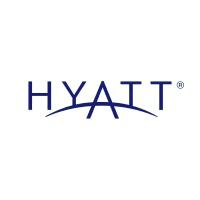
My Place Hotels of America
How much does My Place Hotels of America cost?
Initial Investment Range
$272,500 to $2,947,000
Franchise Fee
$61,000 to $77,000
The franchise offered in this franchise disclosure document is for the rights to own and/or operate, through the conversion of an existing property, a Trend Hotels and Suites by My Place (“Trend”) business that provides transient lodging (hotel) services to the public.
Enjoy our partial free risk analysis below
Unlock the full risk analysis to access 9 more categories covering 100+ risks.
My Place Hotels of America March 28, 2025 FDD Risk Analysis
Free FDD Library AI Analysis Date: July 16, 2025
DISCLAIMER: Not Legal Advice - For Informational Purposes Only. Consult With Qualified Franchise Professionals.
Franchisor Stability Risks
Start HereDisclosure of Franchisor's Financial Instability
High Risk
Explanation
The New York state addendum discloses a "Special Risk" that the required initial investment may exceed the franchisor's total equity of approximately $805,000. This indicates a single franchisee's investment could be larger than the franchisor's entire net worth. This situation may suggest a potential vulnerability and raises questions about the franchisor's capacity to support its franchisees, especially during the initial growth phase of this new brand.
Potential Mitigations
- An experienced franchise accountant should thoroughly analyze the franchisor's financial statements, including the equity structure and cash flow, to assess its ability to fund its obligations.
- Discussing the franchisor's capitalization and plans for funding brand support with your financial advisor is essential.
- Your attorney should review any state-mandated financial assurances like bonds or escrow requirements mentioned in the FDD.
High Franchisee Turnover
Low Risk
Explanation
This risk was not identified, as the FDD's Item 20 tables show that there have been no operating Trend franchises to date, so there is no data on franchisee turnover. In general, high turnover rates can be a major red flag, often indicating systemic problems such as unprofitability, franchisee dissatisfaction, or inadequate support. It is a critical metric for assessing the health of a franchise system.
Potential Mitigations
- When evaluating any franchise, your accountant should carefully analyze the turnover rates presented in Item 20 over a three-year period.
- Engaging a business advisor to research industry-average turnover rates can provide a valuable benchmark for comparison.
- It is critical to have your attorney help you formulate questions for former franchisees to understand why they left the system.
Rapid System Growth
Low Risk
Explanation
This risk was not identified, as Item 20 indicates the Trend brand has zero operating units and therefore has not experienced any growth. For other franchise systems, excessively rapid growth can be a concern because a franchisor's support infrastructure may fail to keep pace with the needs of a quickly expanding franchisee base.
Potential Mitigations
- Your business advisor can help assess whether a franchisor's growth plans are aligned with their support capabilities.
- It's wise to ask existing franchisees in a rapidly growing system about the quality and timeliness of the support they currently receive.
- An accountant can review the franchisor's financial statements to see if they are investing in infrastructure to support expansion.
New/Unproven Franchise System
High Risk
Explanation
The franchisor, My Place Hotels of America, LLC (MPHOA), has offered Trend franchises since 2020, but Item 20 and Exhibit D confirm there are zero Trend hotels currently in operation. This means you would be one of the very first franchisees for a completely unproven brand concept. This carries a significant risk as there is no operating history, established brand recognition, or track record of franchisee success for this specific hotel model.
Potential Mitigations
- Engage a business advisor to conduct deep due diligence on the market viability of this new hotel concept.
- Your attorney should help you understand the risks of investing in a new brand and potentially negotiate for more favorable terms.
- An accountant should scrutinize the franchisor's capitalization to ensure they can adequately support the launch of a new brand.
Possible Fad Business
Low Risk
Explanation
This risk was not identified. The franchise is for the operation of a hotel, which is an established industry with long-term demand, not a business based on a short-lived fad. Investing in a fad-based business is risky because consumer interest may disappear, leaving you with a long-term contract for a business with no customers.
Potential Mitigations
- A business advisor can help you research the long-term market trends and sustainability of any business concept before you invest.
- It is wise to review a franchisor's history of innovation and adaptation to see how they respond to changing market conditions.
- Your financial advisor can help assess whether a business model is resilient enough to withstand shifts in consumer tastes.
Inexperienced Management
Low Risk
Explanation
This specific risk was not identified. The management team described in Item 2 has prior and current experience in the hotel and franchising industries through their involvement with brands like Super 8 and their existing My Place Hotels system. In franchising, inexperienced management can be a concern as they may lack the specific skills needed to provide effective support and strategic direction for a franchise network.
Potential Mitigations
- Your business advisor should always help you vet the backgrounds of the key executives listed in Item 2 of an FDD.
- When considering any franchise, it is prudent to ask existing franchisees about the competence and responsiveness of the management team.
- Your attorney can help you understand the difference between industry experience and specific franchising experience when evaluating a management team.
Private Equity Ownership
Low Risk
Explanation
This risk was not identified in the FDD, which does not disclose ownership by a private equity firm. When this ownership structure exists, there can be a risk that the franchisor's decisions prioritize short-term investor returns over the long-term health of the franchise system and its franchisees.
Potential Mitigations
- Your business advisor can help research a private equity firm's track record with other franchise systems it has owned.
- It's wise to ask franchisees about any changes in support or fees since a private equity acquisition.
- Your attorney can help assess any terms in the Franchise Agreement that allow the franchisor to easily sell the system.
Non-Disclosure of Parent Company
Low Risk
Explanation
This risk was not identified, as Item 1 does not indicate the existence of a parent company whose financials would be material to disclose. In some cases, a franchisor might be a subsidiary of a larger parent company. If the parent's financial health is critical to supporting the franchise system, its financial statements should also be disclosed and reviewed.
Potential Mitigations
- An attorney can help determine if a parent company's financials should have been included based on the franchisor's structure.
- If a parent guarantee is offered, an accountant should review the parent's financial statements for stability.
- A business advisor can help you research the relationship and dependencies between a franchisor and its parent company.
Predecessor History Issues
Low Risk
Explanation
This risk was not identified, as Item 1 states that MPHOA has no predecessors. In cases where a franchise system was acquired from a predecessor, it is important to review the predecessor's history for any issues like litigation, bankruptcy, or high franchisee failure rates, as these could indicate underlying problems with the system that may have been inherited by the current franchisor.
Potential Mitigations
- Your attorney should always carefully review the predecessor information in Items 1, 3, and 4 of any FDD.
- A business advisor can help research a predecessor's public track record for franchisee complaints or business issues.
- It is beneficial to ask long-term franchisees about their experiences under any previous ownership.
Pattern of Litigation
Medium Risk
Explanation
Item 3 itself does not disclose litigation but directs readers to state addenda. The Washington addendum discloses that MPHOA entered into an Assurance of Discontinuance (AOD) with the state to resolve an investigation into restrictive franchisee hiring practices, which the state alleged were unlawful. While the franchisor denied liability, this regulatory action indicates a past practice that drew government scrutiny. A pattern of litigation or regulatory actions against a franchisor can be a significant red flag.
Potential Mitigations
- A careful review of all litigation and regulatory actions disclosed in Item 3 and state addenda by your attorney is essential.
- Your attorney can help you conduct independent research for more details on any disclosed legal proceedings.
- Discussing any pattern of franchisee-initiated lawsuits or regulatory actions with your business advisor can help assess systemic risks.
Disclosure & Representation Risks
Example Risk: Franchisee Financial Obligations
Blue Risk
Explanation
This risk involves the financial obligations that a franchisee must meet, including initial fees, ongoing royalties, and other required payments. Understanding these obligations is crucial for long-term success.
Potential Mitigations
- Carefully review the Franchise Disclosure Document (FDD) and consult with a franchise attorney to fully understand all financial commitments before signing.
- Conduct regular risk assessments
- Implement monitoring and reporting systems
Unlock Full Risk Analysis
Purchase the complete risk review to see all 102 risks across all 10 categories.
Financial & Fee Risks
Example Risk: Franchisee Financial Obligations
Blue Risk
Explanation
This risk involves the financial obligations that a franchisee must meet, including initial fees, ongoing royalties, and other required payments. Understanding these obligations is crucial for long-term success.
Potential Mitigations
- Carefully review the Franchise Disclosure Document (FDD) and consult with a franchise attorney to fully understand all financial commitments before signing.
- Conduct regular risk assessments
- Implement monitoring and reporting systems
Unlock Full Risk Analysis
Purchase the complete risk review to see all 102 risks across all 10 categories.
Legal & Contract Risks
Example Risk: Franchisee Financial Obligations
Blue Risk
Explanation
This risk involves the financial obligations that a franchisee must meet, including initial fees, ongoing royalties, and other required payments. Understanding these obligations is crucial for long-term success.
Potential Mitigations
- Carefully review the Franchise Disclosure Document (FDD) and consult with a franchise attorney to fully understand all financial commitments before signing.
- Conduct regular risk assessments
- Implement monitoring and reporting systems
Unlock Full Risk Analysis
Purchase the complete risk review to see all 102 risks across all 10 categories.
Territory & Competition Risks
Example Risk: Franchisee Financial Obligations
Blue Risk
Explanation
This risk involves the financial obligations that a franchisee must meet, including initial fees, ongoing royalties, and other required payments. Understanding these obligations is crucial for long-term success.
Potential Mitigations
- Carefully review the Franchise Disclosure Document (FDD) and consult with a franchise attorney to fully understand all financial commitments before signing.
- Conduct regular risk assessments
- Implement monitoring and reporting systems
Unlock Full Risk Analysis
Purchase the complete risk review to see all 102 risks across all 10 categories.
Regulatory & Compliance Risks
Example Risk: Franchisee Financial Obligations
Blue Risk
Explanation
This risk involves the financial obligations that a franchisee must meet, including initial fees, ongoing royalties, and other required payments. Understanding these obligations is crucial for long-term success.
Potential Mitigations
- Carefully review the Franchise Disclosure Document (FDD) and consult with a franchise attorney to fully understand all financial commitments before signing.
- Conduct regular risk assessments
- Implement monitoring and reporting systems
Unlock Full Risk Analysis
Purchase the complete risk review to see all 102 risks across all 10 categories.
Franchisor Support Risks
Example Risk: Franchisee Financial Obligations
Blue Risk
Explanation
This risk involves the financial obligations that a franchisee must meet, including initial fees, ongoing royalties, and other required payments. Understanding these obligations is crucial for long-term success.
Potential Mitigations
- Carefully review the Franchise Disclosure Document (FDD) and consult with a franchise attorney to fully understand all financial commitments before signing.
- Conduct regular risk assessments
- Implement monitoring and reporting systems
Unlock Full Risk Analysis
Purchase the complete risk review to see all 102 risks across all 10 categories.
Operational Control Risks
Example Risk: Franchisee Financial Obligations
Blue Risk
Explanation
This risk involves the financial obligations that a franchisee must meet, including initial fees, ongoing royalties, and other required payments. Understanding these obligations is crucial for long-term success.
Potential Mitigations
- Carefully review the Franchise Disclosure Document (FDD) and consult with a franchise attorney to fully understand all financial commitments before signing.
- Conduct regular risk assessments
- Implement monitoring and reporting systems
Unlock Full Risk Analysis
Purchase the complete risk review to see all 102 risks across all 10 categories.
Term & Exit Risks
Example Risk: Franchisee Financial Obligations
Blue Risk
Explanation
This risk involves the financial obligations that a franchisee must meet, including initial fees, ongoing royalties, and other required payments. Understanding these obligations is crucial for long-term success.
Potential Mitigations
- Carefully review the Franchise Disclosure Document (FDD) and consult with a franchise attorney to fully understand all financial commitments before signing.
- Conduct regular risk assessments
- Implement monitoring and reporting systems
Unlock Full Risk Analysis
Purchase the complete risk review to see all 102 risks across all 10 categories.
Miscellaneous Risks
Example Risk: Franchisee Financial Obligations
Blue Risk
Explanation
This risk involves the financial obligations that a franchisee must meet, including initial fees, ongoing royalties, and other required payments. Understanding these obligations is crucial for long-term success.
Potential Mitigations
- Carefully review the Franchise Disclosure Document (FDD) and consult with a franchise attorney to fully understand all financial commitments before signing.
- Conduct regular risk assessments
- Implement monitoring and reporting systems
Unlock Full Risk Analysis
Purchase the complete risk review to see all 102 risks across all 10 categories.











